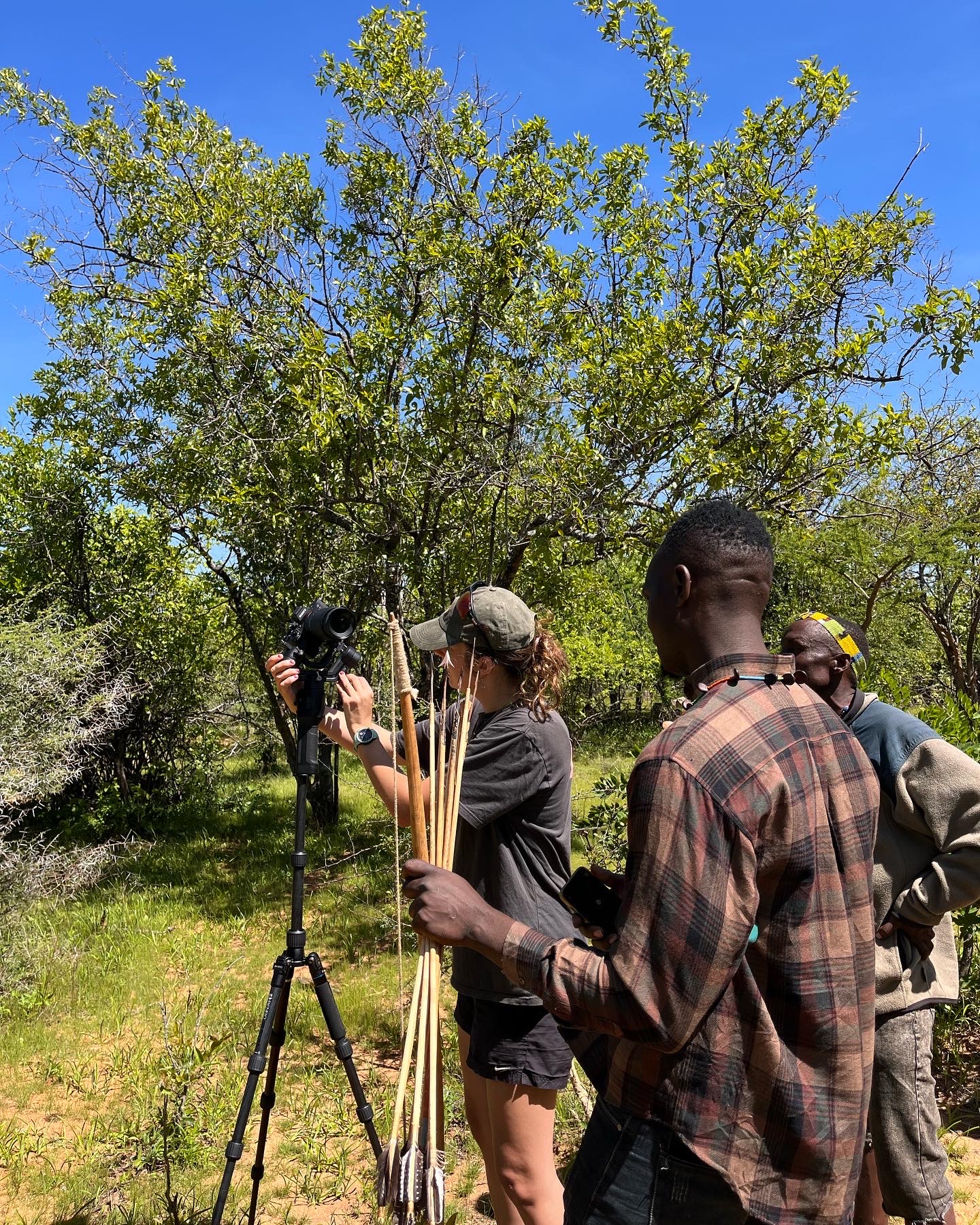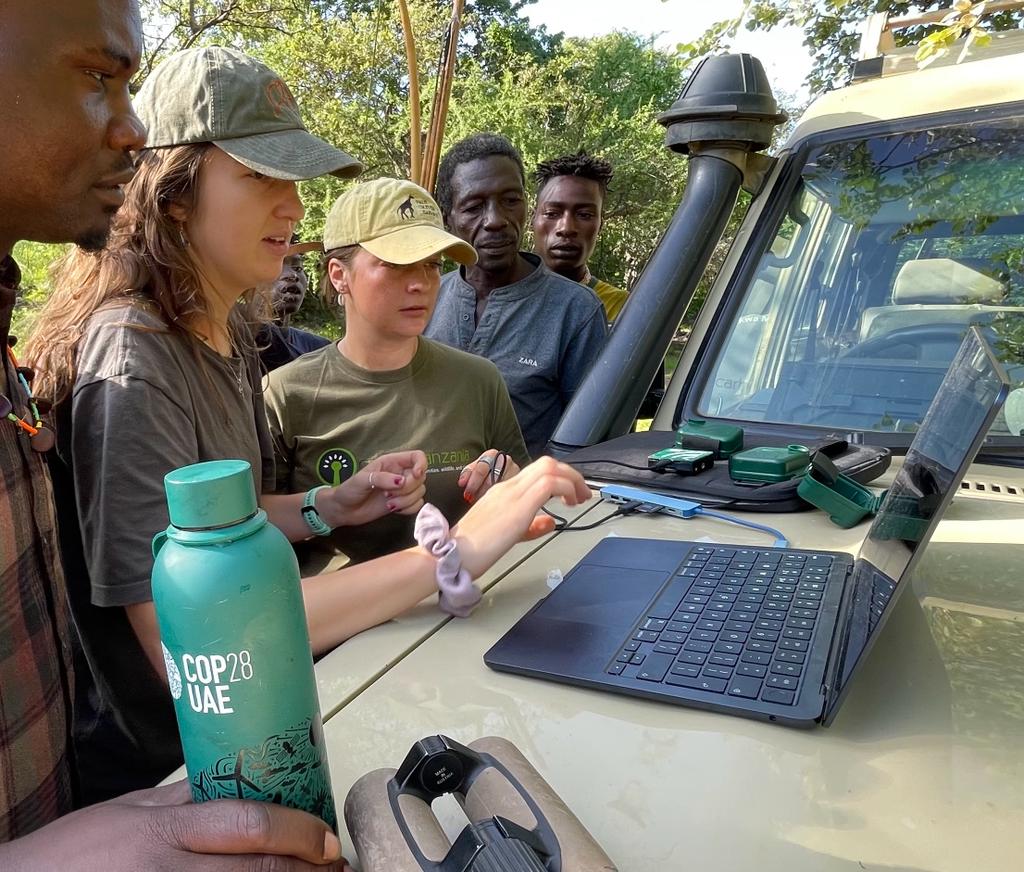It’s not often that you find yourself in the dryland forest of Tanzania’s Yaeda-Eyasi valley talking to the Hadza about honey.
The Hadza, one of the last hunter-gatherer tribes in Africa, are intertwined with nature in a way that is unfathomable in a Western world that merely travels to it to wind down of a weekend. Nowhere is the inter-dependency between people and biodiversity more apparent. Take foraging with honeyguides. A Hadza will call to these wild birds and one will lead them to a nest which the hunter will chop open for the honey, while the bird gets the wax. Amazingly, A University of Cambridge study found that the honeyguides can distinguish between calls of the different tribes. The local birds listen for the Hadza.
I was in Tanzania with Level, at their Yaeda-Eyasi project run by Carbon Tanzania, to iron out any kinks in the data collection process for their first biodiversity project under Plan Vivo’s Biodiversity Standard, PV Nature. Pivotal co-created the methodology for PV Nature, which uses tech to support projects’ data collection and analysis. Demand for biodiversity credits is forecast to be high and the stakes for nature are even higher, so the new Standard aims to ensure credits reflect real, provable gains in biodiversity. Evidence is key, effective data collection therefore is – excuse the pun – pivotal.
As a scientist, I’ve had plenty of experience setting camera traps and flying drones. But this time it wouldn’t be me out in the field.
Pivotal’s data collection philosophy is to deploy relatively inexpensive hardware that’s easy to use. Take the example of an AudioMoth. It costs around $150, and anyone can configure and deploy it. They simply follow a map or GPS device to a predetermined location, attach the device to a tree, turn it on and log its location. Listening begins.
For Carbon Tanzania, who’re committed to working with local communities, this ‘democratisation’ of data collection creates an opportunity to employ the Hadza. Much of my trip was spent talking to the Hadza about the tech on this project (AudioMoths, drones and cameras), explaining a little but listening more. I always know whether or not I’ve clearly communicated something when I invite questions. If there’s nothing but tumbleweed, everyone’s certainly stumped.
The Hadza quickly grasped the need to place an AudioMoth safely away from a branch that could bat the moth and boom the audio. But wondered, “what about the rustle of leaves in trees full of foliage – could that block out the sounds we want to listen to?” This is the kind of question I love – it shows people are engaged in the project.

Local communities are initially curious and a little concerned whenever they come across measuring equipment, wherever that might be. And they can jump to the wrong conclusion. In Cornwall, my quadrats for monitoring the distribution of plant species were even mistaken for an art installation! It’s natural for people to want to know what you’re doing – and why.
When you’re using a square frame, it’s pretty clear that it’s plants rather than people under observation. Less so if cameras and audio devices start appearing across the Yaeda-Eyasi valley. If hunting is captured on camera, it could not only record the Hadza, who have hunting rights, but also neighbouring tribes, who do not – risking conflict. We’re indebted to the Hadza and to Marc Baker at Carbon Tanzania for helping us understand and navigate the local political landscape as sensitively as the natural one.
If the Hadza weren’t confident that any risk to them was small, and the potential benefit for nature significant, then it would have been very easy for them to resolve their concerns by refusing to help. So, I spent a lot of time explaining the data we were recording and how it would – and wouldn’t – be used. In turn, the Hadza scrutinised our sampling plan to double check that it was safe to place the devices in the proposed locations, which turned out to include a steep ravine and a swamp (which we were then able to avoid). The Hadza’s expertise and local knowledge will be fundamental to successful data collection for this project.
Only a few of the Hadza will be doing data collection, but many more will stumble across kit in the field, so I took extra equipment to show to the tribe. Since returning from the trip, I’ve been working with colleagues on stickers we can put on the equipment to explain, in a universally-understandable, visual way, exactly what it’s doing there. Like Carbon Tanzania, we want to shore up the healthy relationship between people and nature. As biodiversity improves, local communities mustn’t get worse off. By employing the Hadza to collect the data, Carbon Tanzania is building the community’s ability to earn income, all the while also giving them the knowledge to help them advocate for themselves and the nature from which they’re inseparable.
With Pivotal’s and PV Nature’s methodologies, customers, projects and partners get to make the choice to use their own data collection experts if they have them and want to, or work with the local community as Carbon Tanzania are doing, and I’m proud that we enable that choice. I went to the Yaeda-Eyasi valley to find out what was possible for data collection there. I left being reminded what is possible for people too.
Top tips for community-led data collection
- Be like the honeyguide and listen out. Local communities may not voice their concerns directly. Be alert and attuned to how they’re feeling about the project. It can be helpful to work with local partners who have already built trust.
- Make sure everyone is involved and informed – not only the people directly involved in data collection but the wider community too.
- Problem-solve together. Local communities can help you anticipate and solve practical problems.
- Use visuals as a universal language. You may or may not have access to a translator. Regardless, visuals are a useful way to explain where tech goes and what it does.
To find out more about Plan Vivo’s PV Nature visit their website https://www.planvivo.org/pv-nature
To discuss how we can help you secure real, auditable evidence of on-the-ground changes in nature, so you can make solid decisions and trustworthy claims, contact us on info@pivotal.earth
To apply to join Pivotal’s team in the field see our Field Surveyor role.

